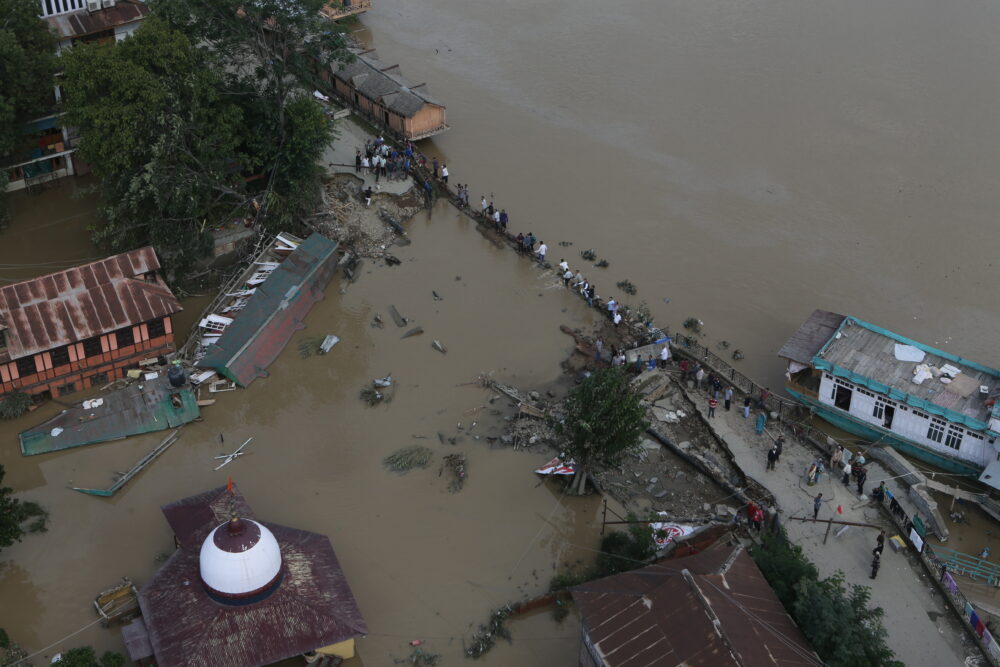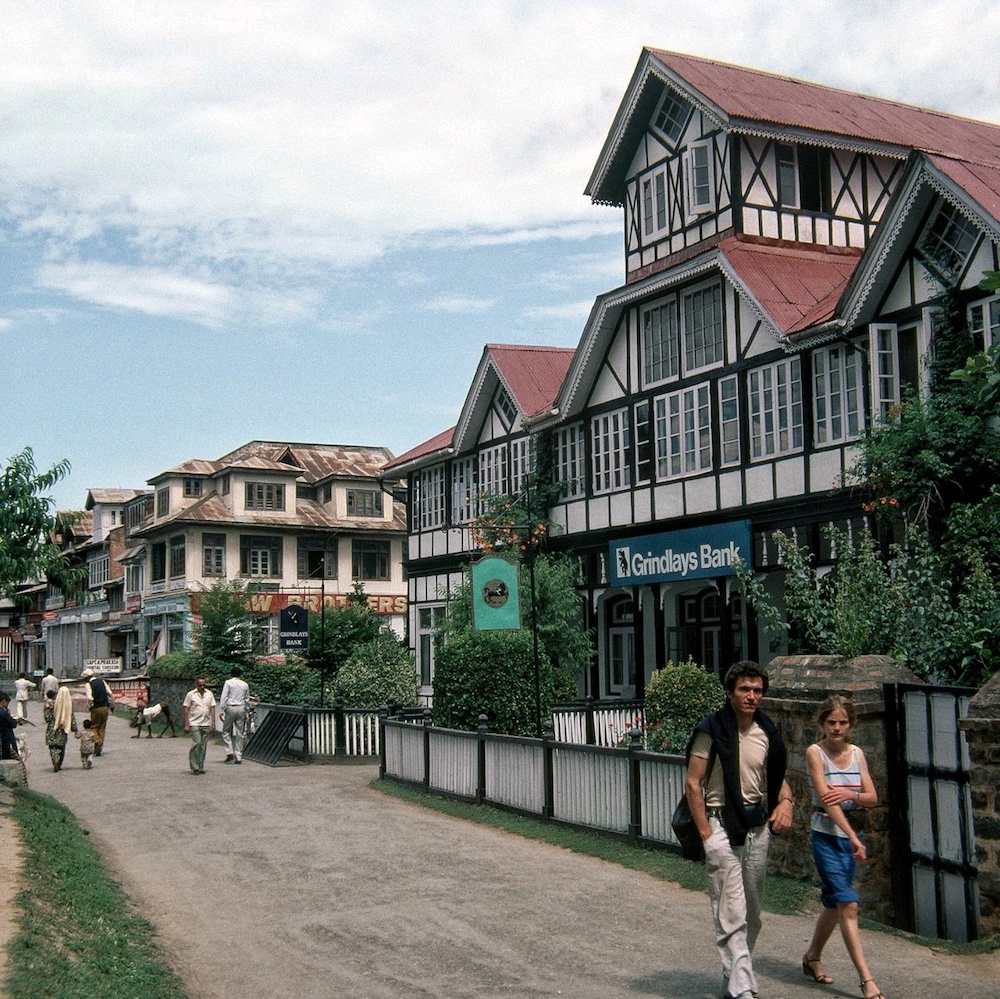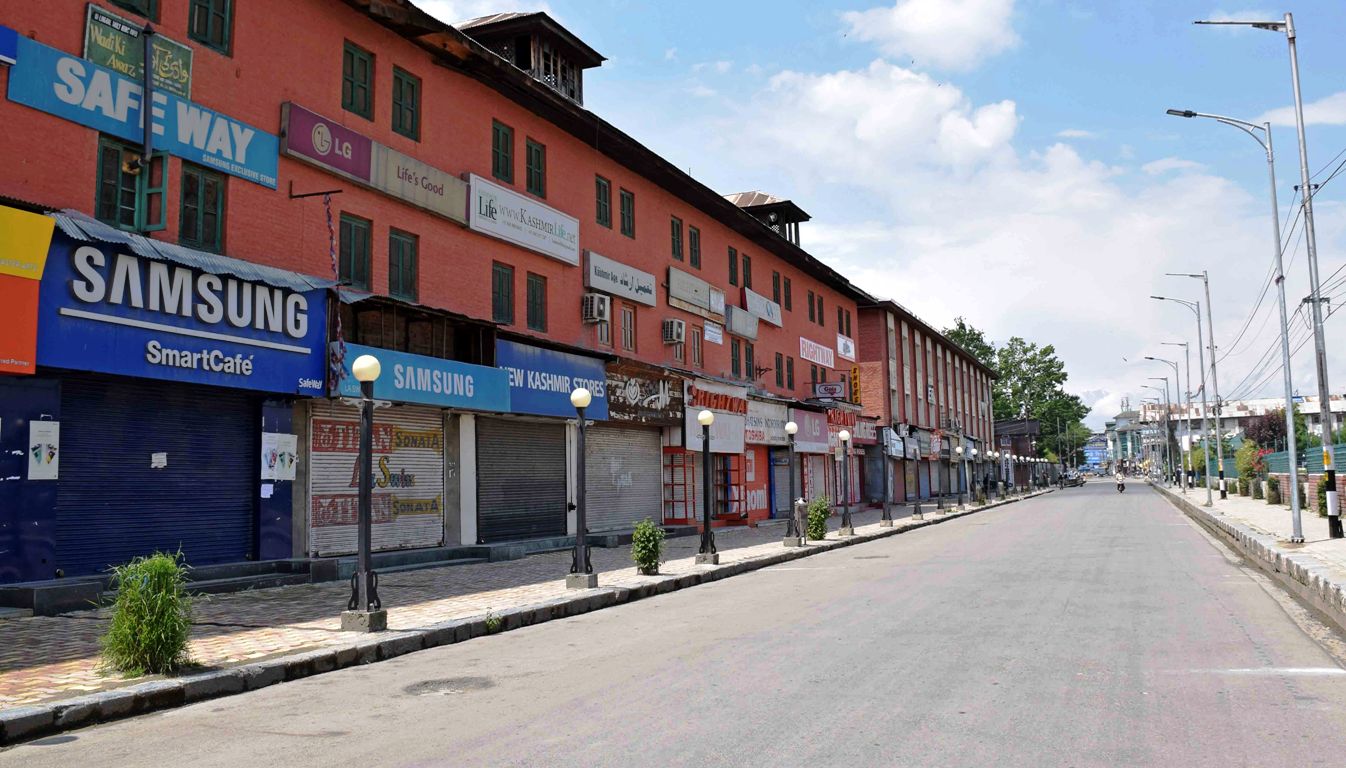Between the elite markets of SR Gunj, Mahraj Bazar and the Bund, the twentieth-century witnessed the rise of hundreds of Khatri traders and a few Parsi families who contributed to the emergence of Kashmir’s formal and global business in Srinagar, the city of Kashmir, writes MJ Aslam

Before the Dogra occupation of Kashmir, the markets around Jamia Masjid Srinagar were the nerve centre of business activity. It was so since the medieval Sultanate era.
In 1871, Wazir Pannu laid out three new bazaars in Srinagar. The first one was laid out on the land of descendants of Khawaja Hassan Banday at Ganiantmanz. The second one was laid out from the Southwest gate of Shergadhi palace through Hanuman Mandir up to Ameera Kadal, Goni Khan and Hari Singh High Street. The third one was laid out at Lal Mandi Srinagar.
The first and the second markets were named after the ruler, Maharaja Ranbir Singh, as S R Gunj or Maharaj Gunj and Maharaji Bazaar, respectively. The third one got the name, Lal Mandi. There used to be Friday shops in and around the compound of Jamia Masjid Srinagar for centuries. Wazir Pannu, however, prohibited setting up of this Friday market and ordered this market would be set up only in Maharaj Gunj, according to details recorded by Kashmir’s celebrated Persian chroniclers.
In these “lately constructed” bazaars,non-Muslim Punjabi traders, mostly from Amritsar, locally known as Khatris, set up many shops. Some locals also set up new shops at Maharaj Gunj (also called S R Gunj), Srinagar. Till the recent past, S R Gunj was the busiest market for visitors and natives.
A favourite shopping destination of Botas of Ladakh, it was one of the favoured markets for foreign shoppers, who would often sail down in shikara boats to the bazaar. As the boats would park at the ghat, they used beautiful stone steps leading to the enclosed S R Gunjbazaar from the river. Part of the city’s cultural space, the nearby old and interesting buildings, the Badshah’s Domuthand tomb in Mazar i Salateen (the graveyard of Sultans) where Mirza Haidar Doghlat Beg and other Sultans of Kashmir are lying in their eternal rest were additional attractions for the tourists.

Punjabi Traders
In 1822 and 1823, William Moorcroft noticed that the best houses of merchants and bankers of Kashmir were on the two banks of erstwhile Marcanal of Nallamar fame between Srinagar’s Qadi Kadal and Saraf Kadal. On the banks of Jhelum at Fateh Kadal, there were the warehouses of noted bankers and shawl merchants of the city, named, Sona Shah, Mukhtah Shah [latter a government shawl agent] and Saifullah Baba in the early Dogra era.
Till 1947, the travellers recorded that the banks of Jhelum on both sides were lined with shops and bazaars of every nature. In Sher e Khas, many private houses on roadsides were converted into shops where carved furniture, silverwares, bronzes and brasses were sold. The candy kitchen shops too existed in some places of the city.
Towards the last decades of the nineteenth century, Maharaj Gunj, Mahraj Bazar and Lal Mandi were Kashmir’s new wholesale bazaars of Kashmir where Panjabi traders imported and sold a variety of goods specially manufactured cotton, brass, copper, salt, sugar, tea, and tobacco, besides exporting non- intoxicating drugs, fibres, fruits, hides and skins, ghee, linseed, rape-seed and wool raw.

Kashmiri Pandits were against the uncontrolled flow of outsiders and Punjabi Khatris in government jobs and the allocation of land to them for residential and commercial purposes. It was on basis of their campaign that Pratap Singh durbar passed first the “State Subject” orders to secure the proprietorship and job rights of the residents of Jammu and Kashmir.
The establishment of the Council of Regency in 1885 at Srinagar witnessed a rush of foreign tourists, explorers, and businessmen into Kashmir. The visitors included many fortune hunters from British India. In Maharaja Pratap Singh’s reign (1885-1925), many shops and businesses mostly of natives and of a few Indian Parsis, and some Europeans, were set up along the Bund Srinagar. They would sell Kashmiri art and craft, dry fruit, honey, saffron and many other things. By the start of the twentieth century, it was recognised by foreign travellers that the purchase of stores before travelling to Tibet and Central Asia via Gilgit or Leh could be easily made in the new “oriental bazaar” at the Bund. A long line of shops had emerged on the government “leased” land on the bund where anything could be purchased from a pin to an anchor.
The Parsis
Unlike the Khatri-run markets that were aimed at managing the requirements of the natives, the Bund was an up-market address that would take care of the requirement of the elite European visitors. Managed and run by British Indian Parsees and Christian, among the non-natives, they laid out shops along the Bund Srinagar and around the foot of Takhti Sulaimani between Dalgate and Poloview area. Encouraging the Bund to be a European-specific market was linked to the larger reality that the now-Srinagar Arts Emporium was the office and home of the British Resident and the massive garden was called the Residency Garden. Even the Road was and continues to be the Residency Road. Not far away from the Resident’s office was the Srinagar Club which was managed by Europeans and no Indian or local was allowed into the Club. For nearly 150 years, the area between Sonwar Bagh and Sheikh Bagh was the key tourist housing area. The presence of the Christian cemetery and a Church near Sonwar testify to the fact that this entire stretch was an upmarket belt that was dominated by European visitors around the year.
In 1891, there were only nine Paris in Jammu and Kashmir comprising two females and seven males. In 1941, only 29 Parsis lived and did business in Kashmir.
The first Parsi family, which arrived in Kashmir was the Dhunjiboys or Dhanjiboys, a well-known business family of Bombay. They had established business not only within British India but in Africa and China as well. It was in the winter of1892 when Dhanjiboyset up the tonga booking, parcel and agency business office under the banner of M/S Imperial Carrying Company, with a cottage attached, adjoining the General Post Office, Srinagar, on a patch of land that was leased out to them by the Pratap Singh government.

It may be noted that the Jhelum Valley Road from Muree to Baramullah was constructed between 1881and1890 and the Baramulla-Srinagar Road was constructed in 1897. Like Srinagar-Banihal-Jammu Road, it was called Tanga Road till motors began plying on it in 1917. Till this road became motorable, Tangas, Ekkas, Phaetons and Bullock Train carts were the only means of transport and carriage on the Jhelum Valley Road between Srinagar and Pindi for travel and trade. They were popularly referred to as Seth Dhanjiboy throughout British Punjab with offices of their Imperial Carrying Company at Rawalpindi and Muree also. They provided information about the condition of the road to the travellers and operated their elegant Tangas, Ekkas, landau, (Victoria)Phaetons and Bullock Train carts on the Jhelum Valley Road between Rawalpindi, Muree, Abbottabad, Baramulla and Srinagar. They were both passenger and goods transporters of the eminence of their time.
The Tangas and Ekkas were prepared for the Company at Sonawar Srinagar. They had stables all along Jhelum Valley Road. Their main stables were, however, on the left side of the general road at Delina Baramulla. They were contacted beforehand through telegrams for advance booking of Tangas and Ekkas at their cited business offices.

From 1917 buggies and buses started plying on the road. Seemingly, Dhanjiboy changed their activity after the Jhelum Valley Road became motorable. Apart from operating lorry and motor transport between Srinagar and Jammu, they started Imperial Furniture House and Imperial Confectionery, Café and Diary (later Ahdoo’s) adjoining the Bund-side at Residency Road, Srinagar. It is claimed that erstwhile Dhanjiboy premises now houses Sadiq Handicrafts, Mehata Studio, Suffering Moses as Dhanjiboy sold the entire property to Sheikh Mohammad Abdullah, and Haji Ghulam Mohiuddin, a renowned businessman, through an irrevocable power of attorney in 1967. [See Parsis in Kashmir in Greater Kashmir on June 27, 2021).
The second influential Parsi family from Bombay that lived and did business in Kashmir was M/S Pestonjee and Co who also established their business along the Bund Srinagar in 1898. In 1926, when the Ski Club of India opened up a unit of for winter skiing at Gulmarg, Pestonjee set up a unit of their firm there as agents of the Ski Club of India. They also set up a club and a hut at Khilanmarg in in 1926. Pestonjee and Co were the stockists of all ski gear, which they imported from England and sold to Skiers of Gulmarg and Khilanmarg.
Besides, Pestonjee also ran a Tourist Agency in the building, which they had raised initially on a piece of land leased by the government and which was largely renovated in Maharaja Hari Singh’s reign. They were also the auctioneers who auctioned costly stock imported from England. Besides, the family was stockiest of White Horse Whiskey and they had installed a wooden White Horse in the compound of their building. The White Horse was gifted to M/S Pestonjee and Co by the owners of the wine company from England.

Till recent years the White Horse existed just in the compound of what was popularly called the Pestonjee Building on Residency Road, Srinagar. Now M S Shopping Mall exists on the site. It is said that Pestonjee was close to Maharaja Hari Singh. He inspired and advised the Maharaja for setting up a local commercial bank for people which was done in 1938 by establishing Jammu and Kashmir Bank Ltd adjacent to the Sadar Treasury Office of Ranbir Singh’s time at Residency Road, Srinagar. That building now houses the Residency Road branch of JK Bank Ltd.
Despite being quite a few in number, the Parsis have had a cemetery adjoining the Badam Bagh Cantonment area, which was called Aramgah. Pestonjee also helped an eminent Parsi scholar discover the tomb of Mirza Daud, a young man, who had left his home in Hindustan to live, trade and die in Kashmir in the early eighteenth century. Daud was so much enamoured with the beauty of Dal that he squandered all money he was getting from his father from Hindustan on the pretext of trade on enjoyments around Dal and had made an oral Will that he should be buried after death around the banks of Dal Lake. He ultimately died and was buried as per his wish on a spur of Kohi Sulaiman near Gagribal. With the assistance of Pestonjee and cooperation of Daya Ram Sahani who was the then superintendent of Kashmir’s Archaeology Department, the tomb of Daud Mian was discovered in the second decade of the twentieth century.















